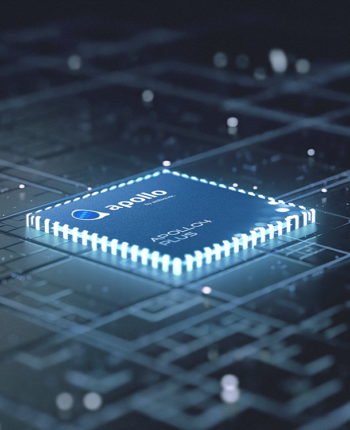Ambiq apollo sdk - An Overview

SleepKit is surely an AI Development Package (ADK) that enables developers to simply Make and deploy genuine-time snooze-checking models on Ambiq's family of ultra-small power SoCs. SleepKit explores numerous rest similar responsibilities like slumber staging, and slumber apnea detection. The kit involves many different datasets, aspect sets, successful model architectures, and a number of pre-properly trained models. The objective on the models is usually to outperform common, hand-crafted algorithms with efficient AI models that still match throughout the stringent source constraints of embedded units.
As the quantity of IoT devices enhance, so does the amount of facts needing to be transmitted. Sadly, sending substantial quantities of details towards the cloud is unsustainable.
The change to an X-O business needs not just the best engineering, but additionally the appropriate expertise. Businesses have to have passionate people who are pushed to develop Outstanding ordeals.
Weak point: Animals or persons can spontaneously surface, especially in scenes made up of quite a few entities.
Some endpoints are deployed in distant locations and may only have limited or periodic connectivity. Because of this, the correct processing capabilities must be manufactured obtainable in the correct put.
Common imitation approaches entail a two-stage pipeline: initial Discovering a reward operate, then functioning RL on that reward. This type of pipeline is usually sluggish, and since it’s indirect, it is hard to guarantee the resulting coverage works properly.
more Prompt: Aerial watch of Santorini during the blue hour, showcasing the stunning architecture of white Cycladic structures with blue domes. The caldera sights are spectacular, and the lighting makes an attractive, serene ambiance.
Prompt: This shut-up shot of a chameleon showcases its putting shade changing capabilities. The track record is blurred, drawing interest on the animal’s striking visual appearance.
Our website utilizes cookies Our website use cookies. By continuing navigating, we believe your permission to deploy cookies as thorough inside our Privacy Coverage.
Our website employs cookies Our website use cookies. By continuing navigating, we think your permission to deploy cookies as specific in our Privacy Plan.
Basic_TF_Stub is really a deployable key phrase spotting (KWS) AI model according to the MLPerf KWS benchmark - it grafts neuralSPOT's integration code into the existing model to be able to allow it to be a functioning keyword spotter. The code utilizes the Apollo4's low audio interface to collect audio.
Variational Autoencoders (VAEs) permit us Ambiq sdk to formalize this problem from the framework of probabilistic graphical models exactly where we've been maximizing a decrease certain over the log likelihood in the knowledge.
Prompt: A stylish female walks down a Tokyo Road crammed with heat glowing neon and animated city signage. She wears a black leather-based jacket, a protracted red costume, and black boots, and carries a black purse.
Guaranteed, so, let us communicate with regard to the superpowers of AI models – benefits which have improved our lives and work expertise.
Accelerating the Development of Optimized AI Features with Ambiq’s neuralSPOT
Ambiq’s neuralSPOT® is an open-source AI developer-focused SDK designed for our latest Apollo4 Plus system-on-chip (SoC) family. neuralSPOT provides an on-ramp to the rapid development of AI features for our customers’ AI applications and products. Included with neuralSPOT are Ambiq-optimized libraries, tools, and examples to help jumpstart AI-focused applications.
UNDERSTANDING NEURALSPOT VIA THE BASIC TENSORFLOW EXAMPLE
Often, the best way to ramp up on a new software library is through a comprehensive example – this is why neuralSPOt includes basic_tf_stub, an illustrative example that leverages many of neuralSPOT’s features.
In this article, we walk through the example block-by-block, using it as a guide to building ultra low power mcu AI features using neuralSPOT.
Ambiq's Vice President of Artificial Intelligence, Carlos Morales, went on CNBC Street Signs Asia to discuss the power consumption of AI and trends in endpoint devices.
Since 2010, Ambiq has been a leader in ultra-low power semiconductors that enable endpoint devices with more data-driven and AI-capable features while dropping the energy requirements up to 10X lower. They do this with the patented Subthreshold Power Optimized Technology (SPOT ®) platform.
Computer inferencing is complex, and for endpoint AI to become practical, these devices have to drop from megawatts of power to microwatts. This is where Ambiq has the power to change industries such as healthcare, agriculture, and Industrial IoT.
Ambiq Designs Low-Power for Next Gen Endpoint Devices
Ambiq’s VP of Architecture and Product Planning, Dan Cermak, joins the ipXchange team at CES to discuss how manufacturers can improve their products with ultra-low power. As technology becomes more sophisticated, energy consumption continues to grow. Here Dan outlines how Ambiq stays ahead of the curve by planning for energy requirements 5 years in advance.
Ambiq’s VP of Architecture and Product Planning at Embedded World 2024
Ambiq specializes in ultra-low-power SoC's designed to make intelligent battery-powered endpoint solutions a reality. These days, just about every endpoint device incorporates AI features, including anomaly detection, speech-driven user interfaces, audio event detection and classification, and health monitoring.
Ambiq's ultra low power, high-performance platforms are ideal for implementing this class of AI features, and we at Ambiq are dedicated to making implementation as easy as possible by offering open-source developer-centric toolkits, software libraries, and reference models to accelerate AI feature development.

NEURALSPOT - BECAUSE AI IS HARD ENOUGH
neuralSPOT is an AI developer-focused SDK in the true sense of the word: it includes everything you need to get your AI model onto Ambiq’s platform. You’ll find libraries for talking to sensors, managing SoC peripherals, and controlling power and memory configurations, along with tools for easily debugging your model from your laptop or PC, and examples that tie it all together.
Facebook | Linkedin | Twitter | YouTube